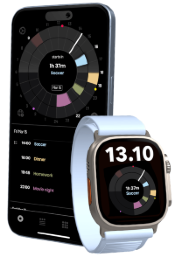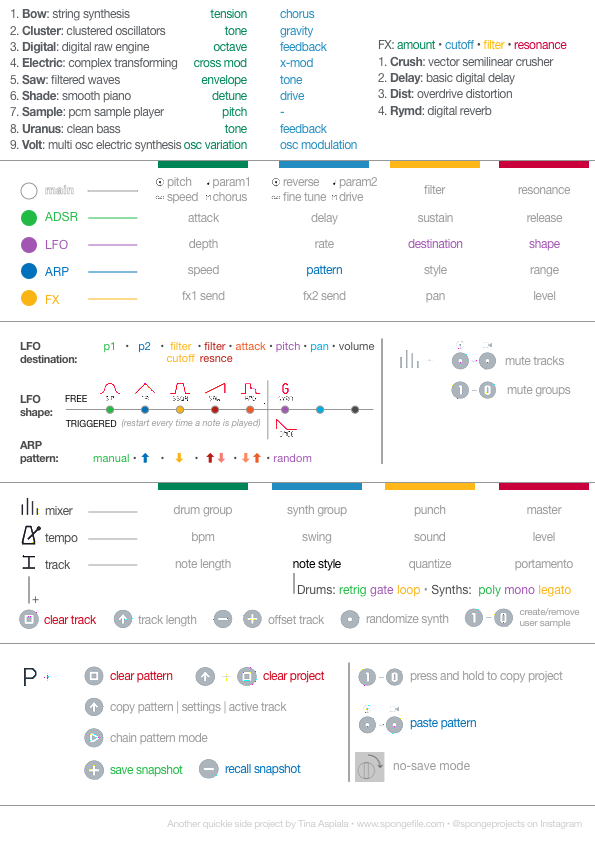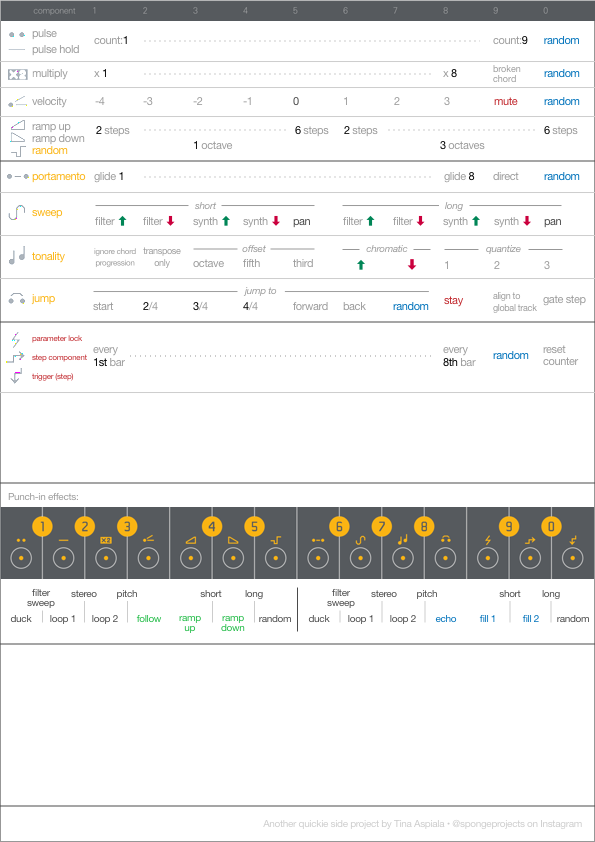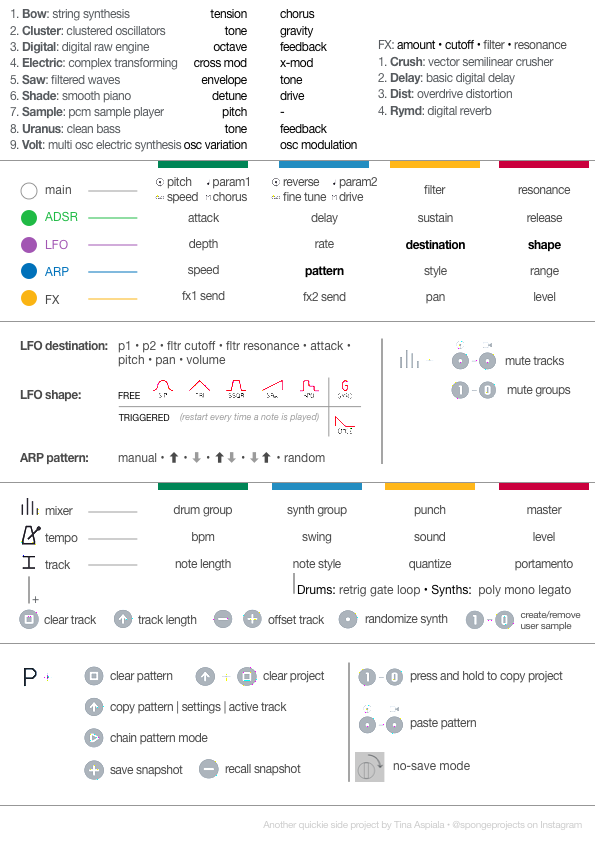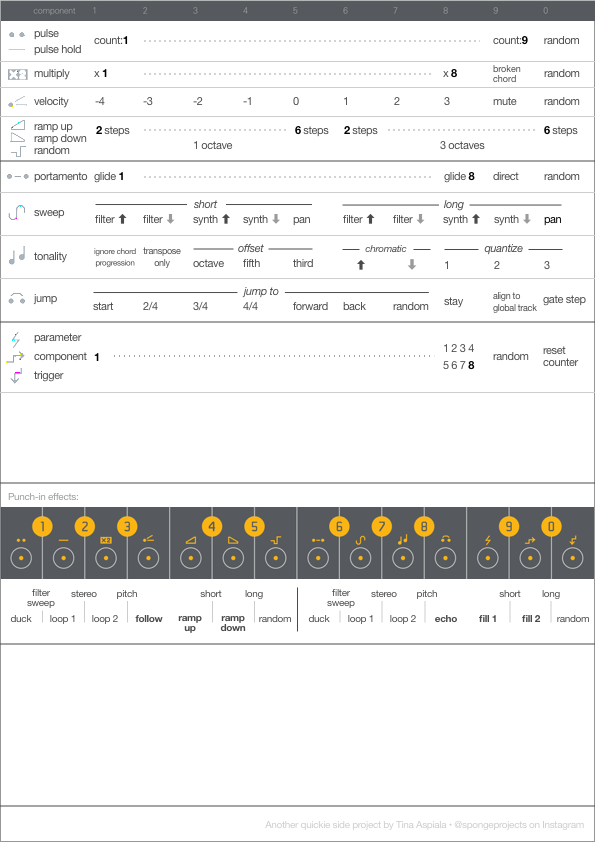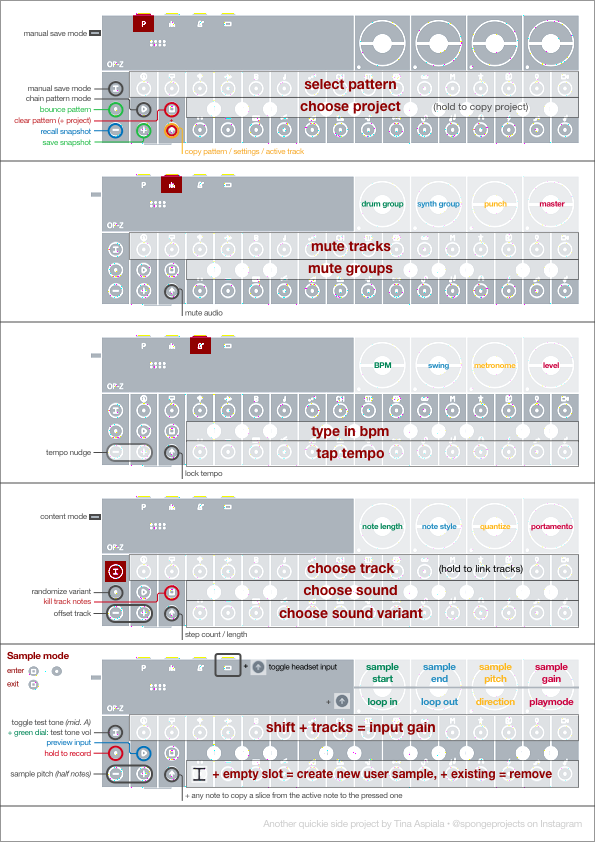UPDATE: I've made a new version of these.
Managed to get my hands on Teenage Engineering's new sequencer/synth/all-in-one portable music studio thing. In order to work out the details of it I set about condensing the manual. Ended up with three pages of quick reference details that you can print, fold up and keep with your OP-Z so you can play with it without hooking it up to a screen. I also made a guide for the oplab module in another post. Links below.
General observations:
- The interface is a lot like the Pocket Operators in that you hold down a button to change the meaning of a set of other buttons. (The OP-Z is essentially a professional-grade PO.) Page 3 below has diagrams that show this.
- At first, tapping shift to change parameter pages for each track can seem like a huge amount of information to memorize, but as you can see on Page 1 below, the colors are consistent across tracks and the functions rarely change. Memorize the meaning of the five colors (main, ADSR, LFO, ARP, FX) and you're well on your way.
- Only three parameters act like menus with specific choices instead of a range of values. (LFO destination & shape, and ARP pattern)
- The yellow and red dials are always filter and resonance for drums, synths, FX and main.
- Punch-in effects are almost identical for the drum side and the synth side, with just three buttons behaving differently.
Types of step components:
🥁 Rhythm-based:
- Pulse, Pulse hold: These lengthen your sequence by replaying a note or holding it for a certain number of steps.
- Multiply: replays a note in the space of one step. (broken chord works on the chord track to "open" the chord on that step)
- Velocity: set how "hard" a step is played.
🎹 Note based:
- Ramp up, Ramp down, Random: Increases/decreases/randomizes the pitch of each selected note, within a certain range, for a cycle.
- Portamento: Makes a pitch glide between notes (from the previous step to the one you selected)
🔴 OP-Z native:
- Sweep: The dials. Automate a sweep of filter, synth parameters, or pan. You just need to add one step to have it affect the entire sequence.
- Tonality: Transposes notes in various ways, either with or without paying attention to the Master track (which is conveniently right above it)
- Jump: Controls where the active step is at any given moment.
👾 Programming-based spark components:
- Parameter lock affects when certain parameter changes (the dials) play on that step.
- Step component affects when a step component is or isn't triggered on that step.
- Trigger(step) affects whether a step plays at all or not.
Step buttons change colors, and this is what they mean:
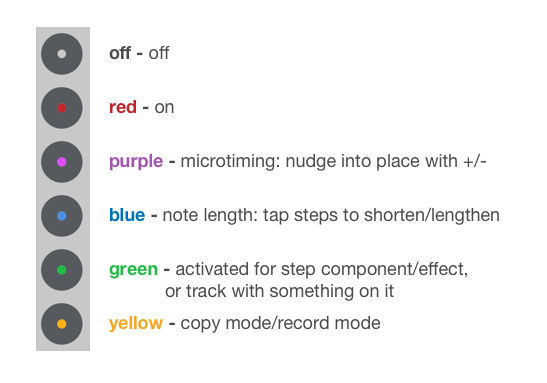
In case you forgot what the tracks do:

Forums:
Tutorials and resources:
- Red Means Recording's OP-Z video tutorial playlist
- Cuckoo's video tutorial
- Jaanus Verberk's video tutorial collection
- drlbradley's printable manual
- Gero's samples guide
- Francois Pé's TouchOSC layouts
- Cuckoo's video MIDI tutorial
- Sound Technology video on step components
Are you going to download these files? Did you find the post useful?
Updated for OP-Z OS 1.2!
Download A4 pdf files here:
- Page 1: Synths, parameters, buttons
- Page 2: Step components and punch-in effects
- Page 3: Hold-down buttons that change everything else
Monochrome-friendly/higher contrast versions:
- Page 1 mono: Synths, parameters, buttons
- Page 2 mono: Step components and punch-in effects
